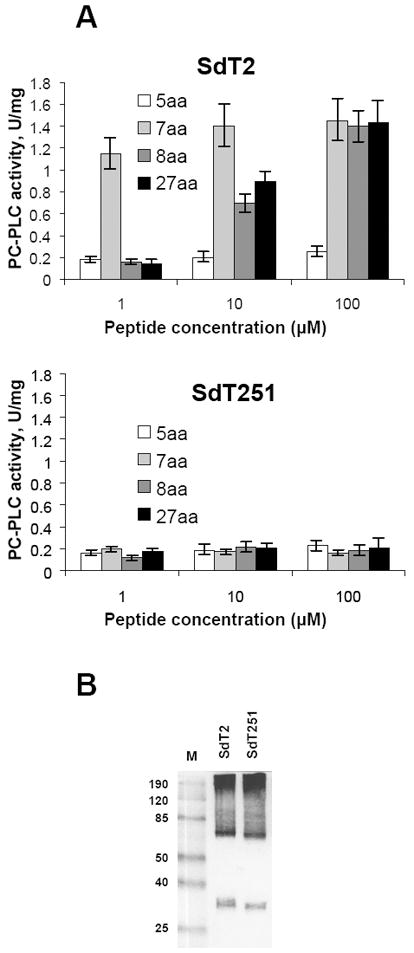Figure 8.

Heterologous B. cereus 569 PlcR/PapR system activates B. anthracis plcB expression while B. cereus 569 PlcR with a C-terminal truncation of six amino acids has lost the ability to activate the B. anthracis plcB in response to PapR addition. (A, upper panel) Phosphatidylcholine hydrolyzing activity of the recombinant B. anthracis SdT2 strain (producing intact PlcR of B. cereus 569). (A, lower panel) Phosphatidylcholine hydrolyzing activity of the recombinant B. anthracis SdT251 strain (producing truncated PlcR of B. cereus 569). Both B. anthracis SdT2 and SdT251 strains were grown at 37°C in LB broth with the indicated B. cereus 569 PapR C-terminal peptides added to final concentrations of 1, 10 or 100 μM. The synthetic peptides were added to a culture of the B. anthracis strains at stationary phase (OD600 1.3 ± .02). PC-PLC assays were performed 1 h after peptide addition. (B) PlcR proteins were analyzed by Western blot of whole-cell proteins from B. anthracis SdT2 and SdT251 using antiserum 1451 as described previously (Pomerantsev et al., 2004). The strains were grown for 10 h in LB broth at 37°C. M, molecular mass markers.
